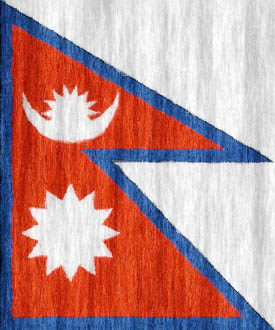By Pratibha Tuladhar/DPA
Kathmandu
Climbers in Nepal are gearing up to scale the world’s highest peak as the new climbing season
approaches.
But after a year marked by tragedy for foreign climbers and Sherpas alike, doubts persist over this year’s expeditions to Everest.
Sixteen Sherpa climbers were killed in an avalanche in April, which led to all expeditions being called off for the rest of the year.
“It was the saddest season for us last year, but we have to resume work because this is what we do for a living,” said Lhakpa Sherpa, a four-time Everest summiteer and
climbing guide.
“I’ll be heading back to the mountains with my friends in mid-March,” he said.
In the wake of the accident, Sherpas protested against safety conditions and what they saw as inadequate compensation offered by the government, prompting the establishment of a mountaineers’ relief fund for future accidents.
The avalanche wasn’t the only tragedy to strike climbers trekking across the so-called roof of the world.
Some 40 people from several countries died when a blizzard wiped out visibility on the popular Annapurna route. Hundreds more had to be rescued from 5,400m up near the Thorong La pass.
But with climbers, Sherpas and the Nepalese authorities hoping for a better 2015 season starting in April, there are doubts about who is even allowed to climb Everest.
After the expeditions were cancelled last year, the government decided to extend the climbing permits by five years instead of returning the money paid for the 2014 season.
But the move has caused considerable confusion about arrangements for this year.
“Last year, the government extended the permits for five years but they didn’t say if it was for individual climbers or a team,” said Sanjaya Baral Kaju, of Asian Trekking.
Six of his foreign clients who could not climb last year were returning this year, he said, and asking for guarantees that this year they will be able to make their expedition to the summit.
“But the government still hasn’t clarified a number of things regarding climbing fees and extensions,” he
complained.
Until 2014, a climber joining a team paid $10,000, while an individual climber paid $25,000.
The payment system was changed this year, with the government saying every climber would now pay $11,000.
“Now, the government hasn’t said whether those who paid $10,000 in a group last year will have to pay $1,000 more to go up as an individual,” Kaju said. “Small details are still unclear.”
In another example, foreign climbers had already paid for liaison officers in 2014 and it wasn’t clear if they would have to pay again, he said.
Meanwhile, tour operators were having to make outlays for the season ahead. From around mid-March, Sherpas begin setting ropes and ladders for the climbing that starts in April.
The April-May spring season is the most popular time for climbing Everest, with more than 530 people making the ascent in 2013.
The preparations this year have also been complicated by a change of route to avoid the section where the deaths occurred last year, known as the Khumbu icefall.
As Sherpas check every rope and every ladder to ensure the safety of future climbers, the authorities’ lack of attention to detail is frustrating people like Kaju.
“It has left us in confusion. We’re being told the cabinet will make a decision and we’re waiting,” he said.



